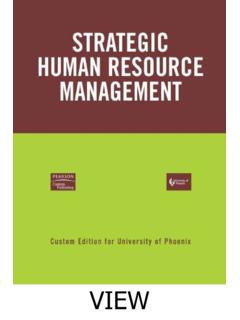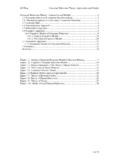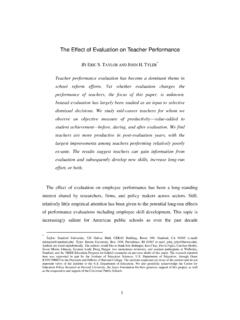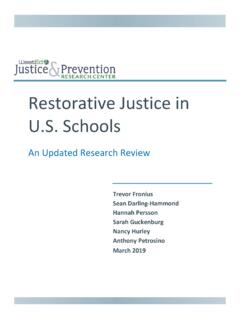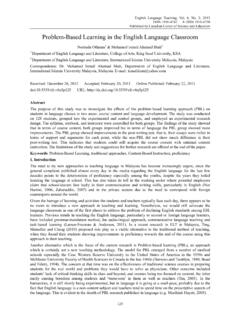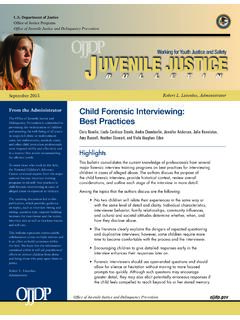Transcription of Approaches to policy development - phuhlisani.com
1 Approaches to policy development October 30 2009 This document forms part of a larger piece of work to design a policy process for the Department of Rural development and Land Reform. A rapid review of the literature 2 Approaches to policy development : A rapid scan of the literature Rick de Satg Phuhlisani 2009 Background This document forms part of a larger piece of work to design a policy process for the Department of Rural development and Land Reform. Phuhlisani has an open access knowledge policy and we make aim to make our work available wherever possible Introduction There is an enormous international literature on Approaches to policy development . In the literature there are two broad perspectives on policy development which are relevant to the design of a policy process for DRDLR.
2 The dominant view is rooted in the New Public Management (NPM) paradigm associated with neo-liberal public sector restructuring in Britain in the 1980 s and 1990 s. This emphasises the planned, managed and modernised Approaches to policy development where policy can be defined as a purposive course of action followed by an actor or set of actors (Anderson, 1975). This approach originated in profound disillusionment in the North with the record of the state in economic and social life. (Simon, 2002: 87). NPM has become closely associated with the modernising agenda of New Labour in Britain but has been since been exported and adapted in different national settings. Vusi Gumede, chief policy analyst in the Presidency's policy Coordination and Advisory Services states that the South African government has selectively drawn on the New Zealand and Australian models of public sector reform and has elaborated on the notion of joined-up government as captured in the workings of the cluster and cabinet committee system.
3 (Gumede, 2008) It can be argued (Gruening, 1998) that there are certain unequivocal characteristics of the NPM like the customer concept, competition and contracting out. All of these characteristics can be found in South African policy discourse. For example Batho Pele - "People First" the White Paper On Transforming Public Service Delivery (1997) speaks about the need to develop of a culture of customer care and the adoption of the tools of the 'new public service management'. The alternative view emphasises that the policy process is by nature complex and somewhat haphazard . As a result any policymaking model will be simplified by default . (Perkin & Court, 2005: 14). It expresses deep scepticism about the adequacy of the linear model of policy -making, characterised by objective analysis of options and separation of policy from implementation.
4 (Sutton, 1999) This view holds that NPM is strongly associated with more technicist Approaches to policy development under the rubric of professionalising the policy process . Concerns have been expressed that technicist policy making loses sight of the fact that citizens make democracy. (Edigheji, 2005) Edigheji cites Boyte who warns that when politics becomes the property of professional elites, bureaucrats and consultants, most people are marginalised in the serious work of public affairs. Citizens are reduced to, at most, secondary roles as demanding consumers or altruistic volunteers . (Boyte, 2004: 4) He also cites White who notes that democratic citizenship is undermined if there is too great a contradiction between the egalitarian norms of a democratic polity and the inequalities of individuals and groups in civil society.
5 (White, 1998: 28) 3 This highlights the need for policy development processes which combine professional rigour, vertical and horizontal alignment with effective citizen and stakeholder engagement. Starting points Given the concerns highlighted above a rapid scan of the literature has attempted to identify key questions which illuminate the theoretical and practical dimensions of the policy development process. At the same time it explores how to ensure that the voices of stakeholders meaningfully influence policy priorities and directions and assess policy options. Eight key questions have been identified from the literature: 1. How to make better policy ? 2. How to design optimal policy development processes in an uncertain and politically contested environment?
6 3. How to meaningfully involve citizens and stakeholders in policy development and assessment of implementation? 4. How to distinguish between different policy levels and design appropriate development processes for each level? 5. How to make better use of evidence in the policy development process? 6. How to overcome the limitations of traditional vertical policy making Approaches which focus on the mandates and functions of individual government departments and effectively address the crosscutting issues which demand co-ordination and alignment of government and non government actors? 7. How to close the gap between policy and implementation? 8. How best to review and evaluate policy and implementation and learn the lessons from experience while still on the go? 1.
7 How to make better policy ? The word policy can be used to cover matters ranging from high order strategy to administrative detail (Government of South Australia, Undated). Better policy is often equated with modernised , professionalised policy development capabilities where policy involves different actors in its formulation and is designed around agreed outcomes. (Bullock, Mountford, & Stanley, 2001) There remains a constant tension between: inclusive policy making processes in which citizens and interest groups are important actors, policy processes which are administratively driven prioritising improved co-ordination within and between government departments. For example the Canadian Government Task Force on Horizontal Issues argues that the effectiveness of policy -making is dependent upon the policy capacities of individual departments to: coordinate within their departments; identify issues affecting other departments and to consult with them; and to examine proposals emanating from other departments.
8 The Task Force encourages policy debate among departments to contribute to the development of more rigorous policy (Government of Canada, 1996) Internationally there are strong arguments for more of a project management approach to policy development where policy is designed to address specified outcomes and which is closely linked to implementation and related systems development . In this conception the value of policy is determined by its success in dealing with a given problem and realising a particular outcome. 4 These outcomes driven policy Approaches differ from much land and social policy development in South Africa which is rights based and which has been drafted to confirm or restore rights and dignity and effect redress through redistribution. It has been argued that this has led to a narrow focus on redistribution or restoration of land without sufficient attention being paid to how these rights can add value to the livelihoods of individuals and communities (Sustainable development Consortium, 2007) The following characterisation of good policy are commonly identified although the emphasis varies between different frameworks: FORWARD LOOKING OUTWARD LOOKING INNOVATIVE, FLEXIBLE AND CREATIVE The policy -making process clearly defines outcomes that the policy is designed to achieve.
9 Where appropriate it takes a long-term view based on statistical trends and informed predictions of social, political, economic and cultural trends to assess the likely effects and impacts of the policy . The policy -making process takes account of influencing factors in the provincial, national, regional and international situation. It draws on experience in other countries. It actively considers how policy will be effectively communicated with the public. The policy -making process is flexible and innovative. It questions established ways of seeing and understanding, encourages new and creative ideas; and where appropriate, reviews established ways of doing things to make them work better. EVIDENCE-BASED INCLUSIVE JOINED UP The advice and decisions of policy makers are based upon the best available evidence from a wide range of sources.
10 All relevant evidence, including that from specialists, is available in an accessible and meaningful form to policy makers. The policy -making process takes account of the impact on and/or meets the needs of all people directly or indirectly affected by the policy . It involves key stakeholders directly. The process takes a holistic view; looking beyond the institutional boundaries of the department to government's strategic objectives. It considers the appropriate management and organisational structures needed to deliver cross-cutting objectives and their cost and capacity implications. It defines joint working arrangements with other departments clearly and develops strategies to overcome barriers to effective joined up programmes. Implementation considered as an integral part of the policy making process REVIEW EVALUATION LEARNS LESSONS Existing/established policy is constantly reviewed to ensure it is really dealing with problems it was designed to solve.
